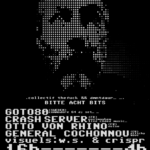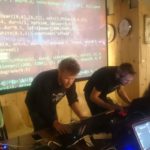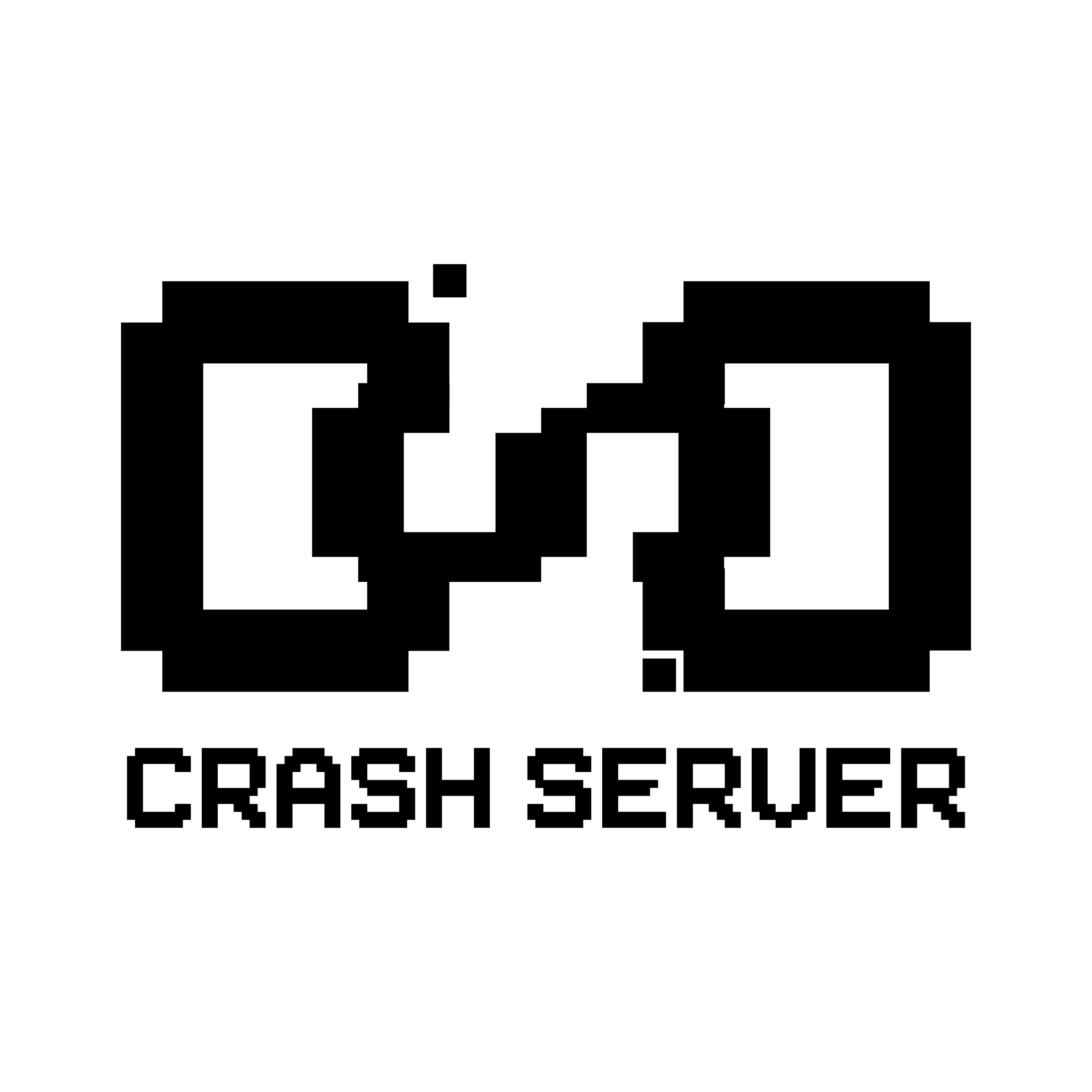INEXTRICABLE // PRESENTATION
https://www.youtube.com/watch?v=uqZ6ZC7LI4c
Inextricable
Presentation of the installation
Inextricable (2021) is an art installation Crash Server created in the context of Connexion part of the “festival européen du film fantastique”.
It’s aim was to create an interactive dancefloor in the style of 90’s videogame and same are electronic music style.
On the first floor of the Shadok we were given a large space to occupy.
In detail description :
The installation is composed of multiple parts :
– A central server – a high end computer with multiple video outputs.
– five rasperry pi with connected hardware
– three video projectors
– loads of CRT screens
– DMX controlled lights
– quadriphonic sound system
Let’s go into detail on how it all functions :
A network of raspberry pies
– The first one, connected to a microsoft kinect served as a welcome point for the visitors. On entering the participants are scanned by the kinect, transformed into a 3d model of themselves in a low poly art hinting at 90’s scifi movie.
It ran code in how brewed open framework c++ and could receive data from the server to change some visual aspects.
-The second one is connected to an IR sensor. Each time a motion is detected and the amount of the detected amount is sent to the server. Triggering responses from the server.
-the third raspberry pi was connected to a pile of old CRT screens via TRSS connections running a modified version of Libreelec, displaying videos we created on the screens. This part of the installation was autonomous.
– the fourth one has it’s own CRT screen output and runs open frameworks code in the form of a tetris like game pilling up code as new boxes every time the server outputs code
– the fifth one is a representation of the audio in the form of an FFT based visualisation reminding low poly sci-fi style, think system’s shock’s cyber game for example. It receives all it’s data from the server through a network connection.
The “Server” (as in crash the server) used our custom python/foxDot code to constantly generate music using random selection of sounds, samples, loops, synths. The server is capable of creating different moods, from ambient to hard techno to glitchy basslines and others.
Receiving information for our IR raspberry, it could get “excited”, increasing it’s bpm and modify it’s algorithm faster and faster. If the crowd was to stay in the installation area, the installation changed from a low key art installation to a full fledge dancefloor.
The server was able to play sound on a full quadriphonic system, choosing were he would output the sound, allowing for some subtle mixing and raising sounds from one part of the installation to the other.
The server has also the possibily to control lights through DMX. We had 4 main lights on the installation. Again, the lights could change drastically the mood, following the tempo of the server. Switching slowly from a slow pulse to a strobe like effect.
The exit corridor had a dozen of light bars, also connected to the system. Thus getting more excited as the server state changed.
The server was also connected to a three video projectors. Generating three different video streams.
– The first one is a hommage to REZ-like video game. A 3d scene was was generated in realtime using a lot of 3d assets we created. The engine could select and piece together an environnement in which a 3d camera could move. this also could change (camera speed, assets…) according to data received from the server.
– The second beamer projected onto a wall of cables made, displaying geometric shapes that reacted to sound values (FFT) in sort of ever evolving equalizer, the colors were mapped using the same color data as the light fixtures.
– The third beamer projected on a wall creating a virtual windows creating the illusion for the public to see through the building.
Using open data of the city of Strasbourg we recreated what the view would have been if there were really a window. Again, the view could be modified by the state of the server. It also displayed some feedback on that state, CPU level, excitement level and could glitch if the server was stimulated enough.
The whole installation was quite complex to setup and worked as an interactive dancefloor for close to two months. It got a few updates during the installation and sometimes we’d pop-up and play a live concert in the arena, fighting against the server.

BITTE ACHT BITS II @ Diamant d’or – Strasbourg (67) – 20 dec 2019
Bitte Acht Bits II @ Diamant d’or – Strasbourg (Fr)…

/Hubs_
./Hubs_ What is the CrashServer Hubs ? Hubs is our…

Labo du Beat @ Graffalgar, Strasbourg (67) – 20 nov 2018
Labo du Beat @ Graffalgar, Strasbourg 20 NOV 2018 Crashserver…

PAHODOPEPRDACRSEUNASCU @ Diamand d’or – Strasbourg (FR) – 15 june 2019
PAHODOPEPRDACRSCU @ Diamand d’or – Strasbourg (Fr) With : UNAS…

